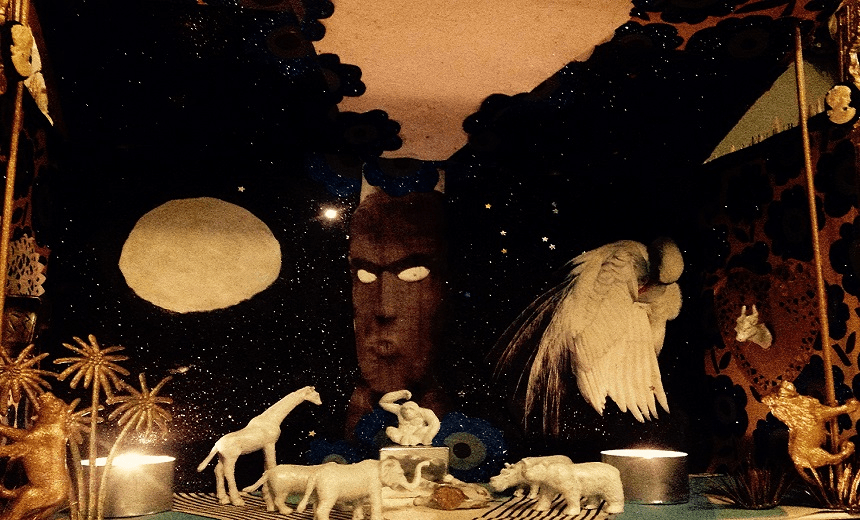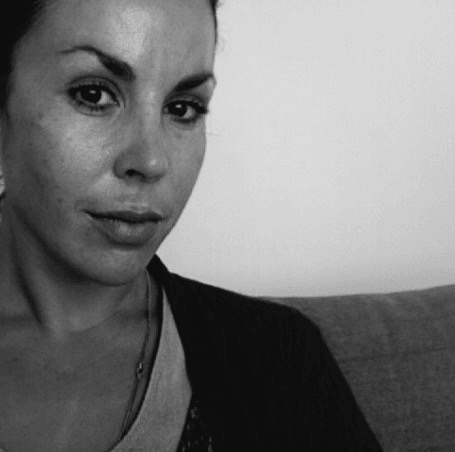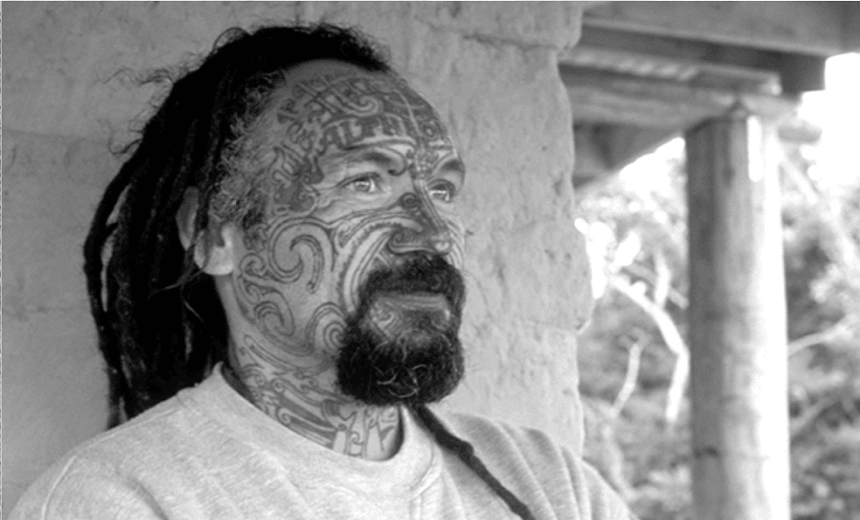A personal essay by Talia Marshall (Rangitane ki Wairau, Ngati Kuia) in response to Ngati Dread by Angus Gillies, a journalist who investigated the killings, arsons, and various assorted apocalyptic madness during the Rasta reign of terror in Ruatoria: “A book about stoners you should never read stoned.”
Ruatōria. Ruatōrea, a place or an idea, a Valhalla of Maoriness, Greenstone City. Not a location so much as a divining stick for measuring authenticity over the presence of water. Horses, horses, horses. When horses first arrived in Aotearoa, manawhenua of the Bay of Islands thought the sea was spitting out its gods at them. Finally some decent visitors, lucky and useful. Did you ride a horse to school? No, then you are not from Ruatōria. Nō hea koe? Where is your pin in the cushion of the world?
Rua-a-Tōrea, the pit of Tōrea, Wikipedia tells me it was called Cross Roads until 1913, my ex said it’s the point where the stick finds water as fire. He really talked like that.
I have never been to Ruatōria but have had it told to me so many times by my son’s father I feel entitled to the dream of the place. It also came with the strong warning that my inferior (!) whakapapa would be laughed at, that my personality would see me driven out of town. I liked that, I liked to imagine these amazing superior women capable of great spreads driving me out of town.
Herbs turned up in Ruatōria to drop Sensitive to a Smile in 1987. In the middle of the five year Rastafarian siege that held Ruatōria to its own account, Herbs turn up with an entourage of far too many people preaching peace and expecting to be fed. There are seven marae in Ruatōria, but still.
One of the images Lee Tamahori records in the documentary of the visit shows three boys on horses, nosing into the wharenui – the light behind their heads during the sound check. Later in the evening the locals out-sing the band.
Ruatōria waves goodybye and gets back to the business of siege and mayhem. To the Rastas and the mess they were making of the place. The churches that were burnt down, the mutilated cousins and loose stock. The terrorised aunties. The fathers who had to hose down the fiery handiwork of their sons.
There are so many events Angus Gillies chronicles in his Ngati Dread trilogy I hardly know where to start. I’m also told it’s a bit of a cult classic, that lonely planet where good books go to die, resurrected by fanatics or film production companies…
*
My son’s father gave me the series to read knowing how much I would love the intense spookiness of it – and because it’s about his family. A slightly crazy person who insisted he knew where Rua Kenena hid the diamond he acquired via Te Kooti – a black gem that Gillies also records discursive accounts of in the first volume of the trilogy, Footsteps of Fire.
Books that have been kidnapped by marae time and the writer’s magnificent capacity for listening. A series where the dead take up vats of time and have the loudest silences.
Footsteps of Fire details the roots of the Ruatorian Rastafarian movement and the various ideas and supernatural elements that made them believe it was okay to start burning everything down and hurting each other. It’s the best book of the three, bizarrely because of all the philosophical chatter.
Gillies writes that messianic visions have always been a feature of Ngāti Porou cosmology, and other iwi share this vision – that someone supernatural will return affecting great change. In this book the prophet will be known by the fire at his feet. The Rastas fight a lot among themselves about who the prophet is. Things start kicking off.
Book two No Dreadlocks, No Cry details the arsons and the growing response by the locals to the fires; the supreme insult of a razed marae. Angry locals who are really relatives begin to retaliate by burning Rastas out of house after house. One marae of the seven in Ruatōria takes them in. It keeps getting uglier and sadder.
Book three Revelations begins with the release of Chris Campbell for the kidnapping of cop Laurie Naden. Chris has calmed down in prison by most accounts but has also become more philosophical and prone to visions of his death. He and his mother are proven correct when he is shot by his cousin Luke Donnelly after he trespasses on his driveway.
But it’s much more complicated than this and it’s a shame that Gillies didn’t take over and shape the series into sense at this point or even earlier in the weakest second book. The discursive elements became exhausting. I’m elliptical by race and I couldn’t cope.
He was going to call the last volume The Gospel According to Luke which would have made more sense to me than the Revelations title. There are many so many competing truths, so many gospels that the central tragedy gets lost.
*
That Luke Donnelly is a strange character, he doesn’t seem to doubt himself once.
My ex had the same certainty, and like Donnelly didn’t actually smoke dope because he said it interfered with his advanced commonsense. But he also seemed to have some direct line to the cosmic sensibility of the Rastas. It was as outrageous as his innate Ngāti Porou snobbery, his assertion while he mounded my lettuces the Hikurangi way that as a descendant of an inferior line (!), gardening was really my slave girl task. One of many tasks slave girls used to have.
How he left rice out for the morning birds like it was Maui Rastafari’s one royal engagement for the day.
A terrible music snob that listened to Hall & Oates! To reggae other than Bob Marley, even wrinkling his boxer’s nose at New Zealand’s great BBQ wrecker. Instead he quoted Morrissey in regards to his own reflexive charm and collected rare Jamaican albums.
Like his mythic Great Uncle Moana collected big band numbers that drifted out of the gramophone over the heads of his sisters pretending to sleep while the boys were up late drinking and playing games of cards. That summer before the war.
Apirana Ngata’s mana rehabilitation scheme aka The Māori Battalion and it’s chief martyr, Moana Ngarimu V.C. Cowboy Company, the boy his sisters called Mo.
Say what you like about reggae being dreary stoner music, the names of those reggae groups trump all. Carlton and the Shoes! The Mighty Diamonds, The Silvertones, The Upsetters, The Gladiators, The Slickers, slip on that! The heady mystery of the Abyssinians and what might be hiding under their giant cone-shaped turbans. The underground genius of Joe Higgs and Alton Ellis, more plaintive than Marvin Gaye.
I mocked him for his imagined kin’s desire to return to Africa, the marijuana mysticism, the lingering paranoia their women might be cheating on them, the overwhelming holistic interconnectedness of these factors.
Much worse, the self-congratulatory solipsism of the I and I pronoun construct. I watched I and I watch the documentaries (sacred texts) where men toked and philosophizzzzzed and the women in the background washed clothes using boards down by the river. I’m not saying anything about the Jurassic sexism of Jamaican music – just women tend to get more stuff done when they are stoned.
But he loved that music. It reminded him of the older cousins who are the main protagonists of Gillies’Ngati Dread trilogy. It reminded him of the Coast, of pigs with their hair singed off being carried out of the bush. The pitbulls he kept on chains in the middle of nowhere.
That was all he had in his photo albums, Pitbulls, and pigs splayed across utes. That’s a bit different I thought.
But some of his music was great, I bopped along behind his back, not white, not quite. Māori father. Māori father.
*
Nark. No one in Ruatōria wanted to be called or caught doing this in 1985. Narking is the quickest route to never being heard from ever again. But long after the events Gillies describes have settled, it transpires the people of Ruatōria want to be heard. Collated 15 years later from earlier meetings, phone calls and emails with Gillies, they’re gabby with their secrets. Luckily he listens to as many people as possible.
In doing so he lets everyone say their piece. Including the forlorn figure of Joe Nepe, who removed Lance Kupenga’s head with an axe. A book about stoners you should never read stoned.
But still well worth reading, the world he renders is amazing. Joe says he has no regrets after killing his cousin. Someone had to get Johnny Too Bad out of him.
Giliies is also admirable for the time he chose to spend listening to the chronic eliipsis of the stoned. This feat combined with trying to remember the intimate clusterfuckery of hundreds of years of another person’s whakapapa. It’s hard enough remembering one’s own family and how they all fit in.
Having a joint with people who are unpredictable torturers and killers! The paranoia! No wonder writing it left him haunted, exhausted, spiritually rinsed. Gillies takes a layered approach to evoking the darkness at the centre of not just this unique sub-culture but quite possibly, as he concludes in the pesky but compelling prologue, the very darkness at the centre of the universe. This book is not just a slice of late 80’s Ruatorian Rasta Madness, but Einstein for dummies.
It is the very quality of the storytelling though that sets it apart. It’s a tale that’s as complex and epic as most village life and Gillies has the good grace and instincts to realise this…that dreaded word tino rangatiratanga wants to creep in but something in his eagerness prevents it.
He also captures its weird religious elements, the cosmic micro-climate specific to Ruatōria that partly fed the Rasta mayhem. The sense that in this pin-sized republic 300 years can pass in the blink of a lizard.
A spiritual mash-up that included elements of Rastafarianism but also Ringatū, Te Kooti and Rua Kenana, Wahawaha as traitor, the mythic agendas of tohunga, kuia and tikanga experts, Anglicanism, Catholicism, Maui,The Stone People, curses contagious as giggles – and the early influence of a woman called Sue Nikora, who takes the Rastas under her wing. A woman who claims to be the proper leader of the government of New Zealand based on the purity of her whakapapa.
Books that are outlandishly funny as they are sad. The myths that run underneath all the madness in truth, a moa standing on Hikurangi with one leg. UFOs. I couldn’t get enough of it despite the fact it was sort of all over the place.
Stories of cousin hating on cousin, of cops having to arrest their cousins, of cousins spitting in their mother’s faces and leaving bits of each other on a driveway with a .303. The centerpiece to me in all this human misery is a horse dragged through the main street of Ruatoria behind a Black Wolseley. This will never leave my mind or yours, if you read it. Please do.
*
I remember how the boy’s father hovered over my reading of the first book saying he knew who it was that had the fire at his heels, who the little boy was that Gillies describes the kuia shielding in the whare from the beaky tohunga.
A trilogy that got under the skin of the writer of so much that he comes to the startling conclusion in the prologue, no less, that there is an evil spirit lurking within its pages, a presence, a hint that reading the books could give you a forked tongue.
A Candyman type of situation that prevents me from naming the hole Joe threw Lance’s body into, what John saw gaping down Junior Paul’s neck. That devil, Johnny Too Bad grinning the abyss.
I’d rather name the horse dragged behind the black diamond of the Wolseley, than that hole, that hill.
*
I also remember the paranoia I had when my son’s father would say the dead didn’t like the way I was talking about them. How he carved a head on a stick and stuck it in the yard of the house I rented and told me if I moved the little man I would die. How busy this stick kept me! Like the real rules of life could be whittled down to a sharp point with its tongue sticking out; those times I worried my own head would end up down a hole like Lance Kupenga. Not a magic hole, just a hole.
But life is tough enough without wondering if the windless snap of a branch or the unsettling dreams that Gillies experienced writing Ngati Dread are the acts of the dead auntie utu voodoo brigade. Especially when those aunties are capable of such kindness and such spreads.
*
When Moana-Nui-a-Kiwa Ngarimu died in Tunisia winning his Victoria Cross, his fiancée Dah took sick. She was nursed by Moana’s mother even though he had cut off the engagement between them, maybe having dreamt his fate at Tebaga Gap throwing rocks at the Desert Fox – refusing to leave his cousins.
When Dah in turn died of disappointment and pneumonia Moana’s mother Maraea had already put the engagement ring back on her finger, the sweetheart returned to both Mo and the underworld.
These battalion ghosts loom over the Ngati Dread trilogy, the men like Moana who went away to defend Hikurangi and left future sons and nephews for dust – those Rastas fighting among it 40 years later.
They’ve settled down now,the Rastas, Gillies writes that the brief sect and its psychedelic violence dissipated after Campbell’s death, that the aging hard men are now building little adobe houses.
They’ve stopped swearing and spitting in the faces of their mothers in the wharenui. Relatives don’t return home from a Tangi anymore to find smoke rising from where their house used to be.
Moana’s sisters, insulted by their sons for being the good tenants of the Williams family instead of the proper patrician overlords of Hikurangi, Back when Maui was floating on his mother’s hair, that mountain was theirs.
Like my ex used to insist and the elders do in this Ngati Dread series, “We’ve always been here.” Ko wai koe? Who the fuck are you?
*
Reading Ngati Dread it made sudden sense that my son’s father would run 40 kilometres to my house and tell me he was Maui,that he knew where the diamond was hidden, that he grew out of the stone people, how the magpies meant to kill him and how funny he made the last bit seem. Attacked by magpies on SH1. Hilarious! On the sunny side of the whanau crazy scale, and me, the quick study,
I hope it’s also plain that he would never let me adore him as much as I did. He was like the Scheherazade of Ruatōria who cared enough to hold me a little bit captive in his silk – a loon tossing rice for the birds, who taught me how to swear effectively and let the roots of a lettuce breathe.
I learnt that if someone gives you a book to read that means a lot to them, look after it, they’re giving you the spare key to their world.
But also as a cautionary aside, long distance running does seem to affect some people more than acid and should not be done on main arterial roads.
How when I look at my son I’m reminded very much of one of the grandnephews Moana never met, the one his Nanny called my Moana because of the preternatural resemblance. I’m reminded of that time my ex’s own father emerged like a mirage when he was a kid and they listened to America, trio and uselessly lite cousins of Neil Young.
Listened to this together in his father’s truck, driving through the desert of Mo’s victory on a horse with no … passing through the unreal to real and coming out the other side in flames.
The Spinoff Review of Books is brought to you by Unity Books.






